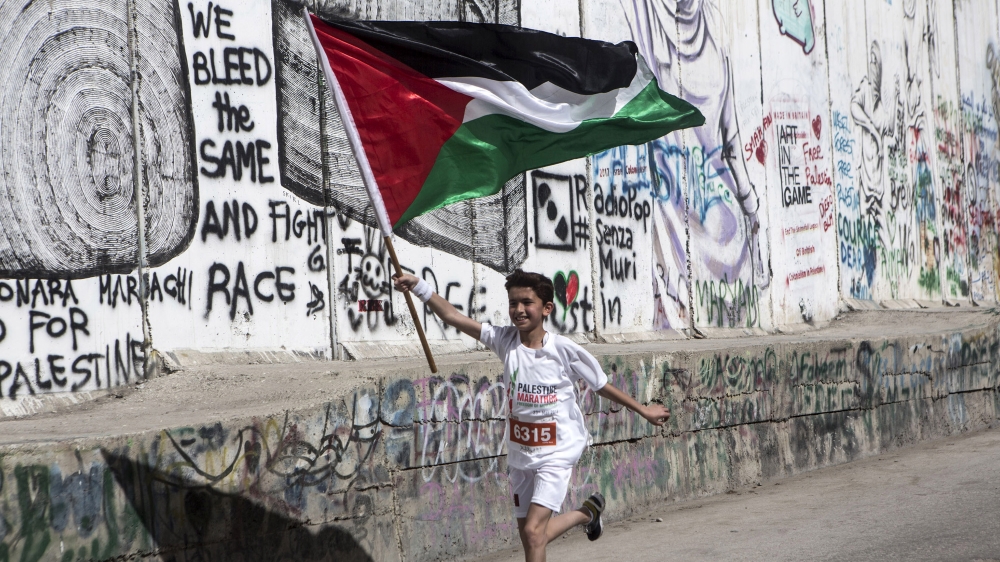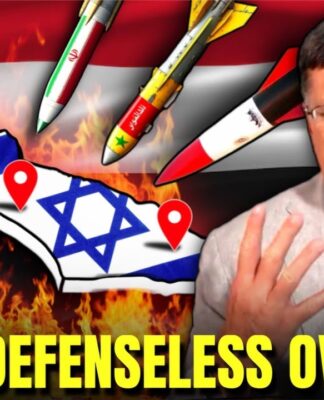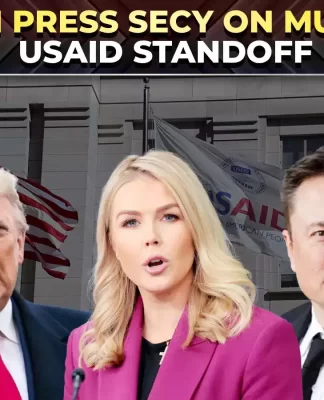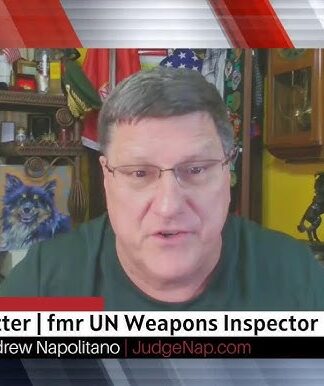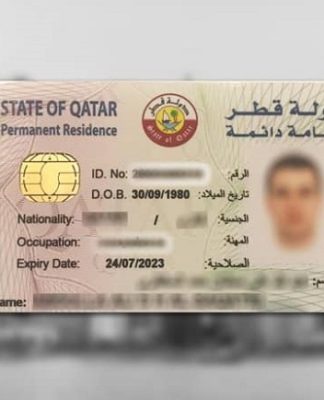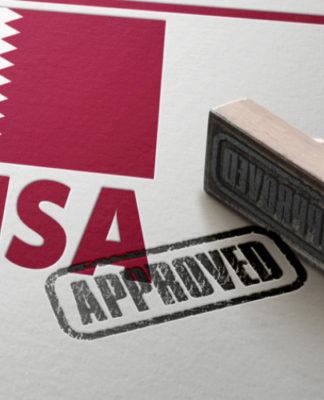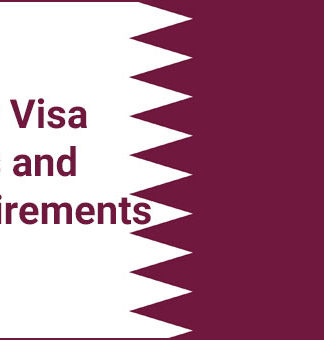All the key events in historic Palestine since World War I.
No country in the Middle East conjures up as much passion and anger in the Arab psyche as Palestine.
In 1948 hundreds of thousands of Palestinians were driven from their homes by Zionist gangs who wanted to establish the state of Israel.
In 1967, a war between Israel and Arab countries resulted in the occupation of even more of historical Palestine and the displacement of thousands more Palestinian refugees.
The descendants of these two waves of refugees number in the millions today, continue to live in squalor in refugee camps around the Arab world.
But the roots of the conflict predate the UN mandate which led to the creation of Israel in 1948:
- 1915, Hussein-McMahon: Sharif Hussein bin Ali, ruler of Mecca and the Hejaz, and Sir Henry McMahon, the British high commissioner in Egypt, exchanged pivotal letters about the future political status of the Arab lands, with Britain aiming to encourage an armed revolt against Ottoman rule.
- In one such letter, McMahon wrote: “Great Britain is prepared to recognise and uphold the independence of the Arabs in all the regions lying within the frontiers proposed by the Sharif of Mecca.”
- May 16, 1916, Sykes-Picot: Britain and France signed a secret agreement outlining their spheres of control in the Middle East after the first world war, in which Palestine was designated for international administration pending consultations with Russia and other powers.
- The agreement was eventually made public and was seen by Arabs as a betrayal of the Hussein-McMahon correspondence.
- November 2, 1917, the Balfour Declaration: Arthur James Balfour, Britain’s foreign secretary, sent a letter to Lord Rothschild, president of the Zionist Federation, stating the government’s support for the establishment of “a national home for the Jewish people” in Palestine, an area that today includes Israel, the West Bank, and the Gaza Strip.
- 1921, the Arab kingdoms: In the aftermath of World War I, the sons of Hussein were made the kings of Transjordan (later Jordan) and Iraq.
- July 24, 1922, the British Mandate: The League of Nations gives Britain a mandate to administer Palestine, while Britain expresses its interest in Zionism and describes its intention to develop a Jewish state.
- 1929 clashes: Hundreds of Arabs and Jews died in clashes that erupted in Jerusalem and Hebron over the status of key religious sites.
- 1930s Jewish immigration: About 250,000 Jews arrive in Palestine during this period, in large part because of the rise of anti-Semitism in Europe.
- 1936-39, the Arab Revolt: Palestinians revolt to protest against the British governance that encouraged open-ended Jewish immigration amid increasing economic hardships faced by Palestinian workers. A general strike was declared, led by Hajj Amin al-Husseini, as well as a boycott of Jewish goods. More than 5,000 Arabs are killed, mostly by the British. Several hundred Jews are killed by Arabs.
- 1942, the Palestine Regiment: The regiment comprises Jews and Arabs conscripted in Mandate Palestine and is an infantry regiment of the British Army. It is deployed to Egypt and Cyrenaica, but most of its work consists of guard duty. In 1944, the Jewish military subunits of the regiment became the basis for the larger Jewish Brigade, which took part in the Allies’ WWII effort in Europe.
- July 22, 1946: The King David Hotel in Jerusalem is bombed by members of Irgun, a Zionist organisation. The hotel housed the British civil, military and police command in Palestine; 91 people are killed, 28 British, 41 Arab, 17 Jewish and five from other countries.
THE NAKBA
- November 29, 1947, the partition plan: On November 29, the United Nations General Assembly passed a partition plan dividing Mandate Palestine into two states.
- At the time, Jews owned only six percent of the land, but the Jewish state was to receive 56 percent of Mandate Palestine, an area with a population of 498,000 Jews and 407,000 Arabs, according to a UN report at the time.
- The Arab state was to have 725,000 Arabs and 10,000 Jews. It was accepted by the Jewish leadership but rejected by the Arabs. Up to 800,000 Palestinians are forcibly expelled from their homes in the part of the land that becomes the state of Israel.
- April 9, 1948: The Deir Yassin massacre: On, more than 100 Palestinian residents of the Jerusalem village of Deir Yassin, mainly women, old people and children, were killed by members of the Irgun and Stern Gang Zionist militias.
- May 14, 1948: General Alan Cunningham, the last British high commissioner, left what was known then as the Mandate of Palestine.
- May 15, 1948: Al-Nakba: The declaration of Israel as the Jewish state took place.
- May 16, 1948, the Arab-Israeli war: Egypt, Syria, Jordan, Saudi Arabia, Iraq and Lebanon declared war on the new state of Israel. The poorly organised forces of Egypt, Syria, Lebanon, Iraq and Jordan suffered a humiliating defeat at the hands of the Israeli military, which was a combination of Jewish militias, such as the right-wing Irgun Tzvei Le’umi and the more extreme Stern Gang.
- April 1949: Israel and Arab states agreed to an armistice in April 1949, Israel taking control of about 50 percent more land than was originally allotted to it by the UN partition plan.
- April 24, 1950: the West Bank is put under the administration of Transjordan. Egypt establishes administrative control over Gaza.
- October 29, 1956, the second Arab-Israeli war, also known as the Suez War, broke out when Israel, Great Britain and France launched a joint attack against Egypt aimed at instituting a ‘regime change’ and deposing Gamal Abdel Nasser, the country’s charismatic leader.
- But it failed to achieve its goals and marked the decline of Britain’s colonial powers in the Middle East.
- October 1959, the Fatah movement: The Fatah movement began of the Fatah movement in Syria, Lebanon, Jordan and the Gulf Arab states.
- The movement aimed to unite Palestinians and undertake armed resistance to “liberate Palestine”. Fatah would later become the main faction within the PLO.
- May 1964, Palestine Liberation Organisation: The Palestine Liberation Organization (PLO) was founded in Cairo by the Arab League.
- June 1967, the Six Day War: Israel launches a pre-emptive attack on Egypt, Syria and Jordan. It captures the Sinai Peninsula and Gaza Strip from Egypt, the Golan Heights from Syria and the West Bank and East Jerusalem from Jordan.
- That same year, Israel begins settlement programme in areas captured during the Six Day War.
- March 8, 1969, the War of Attrition: War is declared in March of 1969 by Gamal Abdel Nasser of Egypt, with the aim of launching sustained attacks on Israel to dislodge it from the Sinai peninsula, which it had taken in the Six Day War.
- The aim was not achieved and a cease-fire was signed in August of 1970.
- February 2, 1969: Yasser Arafat is appointed chairman of the PLO. The organisation operates out of Jordan, developing into what some call “a state within a state” and launching attacks against Israel from Jordan.
- Black September, 1970: A month-long battle between Palestinian groups in Jordan, such as Fatah and the Popular Front for the Liberation of Palestine (PFLP), and the forces of Jordanian King Hussein Bin Talal.
- Martial law was declared by the king, and his forces fought the Palestinian forces that many felt were becoming too entrenched in Jordan. The end result was the PLO being driven out of Jordan and moving to Lebanon.
- September 5, 1972: A splinter group that had broken off from Fatah and called itself Black September killed 11 members of the Israeli Olympic team and one German police officer at the Munich Olympics.
- October 6, 1973, the October War: In a surprise attack on the Jewish Day of Atonement, Egypt and Syria retake the areas in Sinai and the Golan Heights that were lost in the Six Day War. Despite initial gains, they are soon forced to retreat by Israeli forces.
- November 13, 1974, Arafat’s speech: Yasser Arafat makes his first appearance before the UN General Assembly, delivering his “olive branch and freedom fighter’s gun” speech.
- November 22, 1974: The PLO is granted observer status at the UN.
- September 17, 1978, Camp David Accord: Menachem Begin, Israel’s prime minister, and Anwar Sadat, Egypt’s president, sign the Camp David Accord. Israel agrees to withdraw from the Sinai Peninsula in exchange for peace and a framework for future negotiation over the West Bank and Gaza Strip.
- March 26, 1979: A peace deal is signed between Egypt and Israel. Egypt becomes the first Arab country to recognise Israel. Later in the year, the Arab League suspends Egypt’s membership of the league and moves its headquarters to Tunis.
- June 6, 1982: Israel launches a six-month invasion of Lebanon to remove PLO fighters it said were threatening its border. The PLO relocates to Tunis, and maintains only limited activity in Lebanon.
- September 16, 1982, the Sabra and Shatila massacre: Lebanese Phalangists (members of a Christian paramilitary group) killed up to 2,750 Palestinians in the Palestinian refugee camps of Sabra and Shatila.
- August 1983: The Israeli army withdraws from most of Lebanon, maintaining a self-proclaimed “security zone” in the south.
- October 1985, Israel’s Operation Wooden Leg: An attempt to assassinate Arafat is launched with an air raid on his headquarters in Tunis. He survives, but 60 members of the PLO are killed, including much of the leadership.
|
|
- First Intifada
- December 8, 1987, the first Intifada: The First Intifada, or uprising, began. Palestinians begin general strikes, riots and civil disobedience campaigns across the West Bank and Gaza Strip. Israeli army replies with tear gas, plastic bullets, and live rounds.
- Sheikh Ahmed Yassin creates Hamas from the Gaza wing of the Egyptian Muslim Brotherhood. It pursues an armed struggle against Israel with the aim of liberating historic Palestine. It also provides social welfare programmes to Palestinian victims of the Israeli occupation.
- Hamas defines itself as a “Palestinian Islamic national liberation and resistance movement”, using Islam as its frame of reference.
- November 15, 1988: At a meeting of the Palestine National Council in Algeria, Yasser Arafat unilaterally proclaims the State of Palestine.
- August 1990, the invasion of Kuwait: The PLO supported Iraq’s invasion of Kuwait. Kuwait responded by severing ties with the PLO and cutting its financial backing. After Iraqi forces are defeated, Kuwait expels some 400,000 Palestinians who had been living in the emirate.
- September 13, 1993: the PLO and Israel sign the Oslo Accords to recognise each other.
- October 26, 1994: Israel and Jordan sign a peace treaty ending 45 years of hostility. Israel agrees to recognise the special role of Jordan over Muslim holy sites in Jerusalem.
- November 4, 1995: Yitzhak Rabin, Israel’s prime minister was assassinated by Yigal Amir, an Israeli Orthodox Jewish student who is against the Middle East peace plan. Shimon Peres takes over as prime minister.
- July 2000: The Camp David summit between Ehud Barak, Israel’s prime minister, and Arafat, the chairman of the Palestinian Authority, aimed at reaching a “final status” agreement. It ended after Arafat refused to accept a proposal drafted by US and Israeli negotiators.
|
|
Second Intifada
- September 2000: The second Intifada was sparked when Palestinians began to demonstrate after Ariel Sharon, of the Likud party in Israel, visited the al-Aqsa Mosque compound in Jerusalem.
- February 6, 2001: Ariel Sharon is elected the leader of right-wing Likud party and refuses to continue negotiations with Arafat.
- June 1, 2001: A Hamas suicide bomber attacks a nightclub. Twenty-one Israelis are killed, more than 100 injured.
- October 17, 2001: Rehavam Zeevi, Israel’s tourism minister, is shot dead in Jerusalem by members of the PFLP.
- December 2001: Sharon sends troops into Ramallah, shelling and surrounding the Palestinian government’s West Bank headquarters; Arafat is unable to leave.
- March 27-28, 2002: A summit is held in Beirut between heads of Arab nations to discuss plans to resolve the Palestinian-Israeli conflict.
- Arafat is unable to attend as Israel will not guarantee he will be able to return. Arab leaders collectively offer Israel peace, recognition and normal relations in return for Israel’s withdrawal from Arab lands captured since 1967, the restoration of a Palestinian state with east Jerusalem as its capital and a “fair solution” for the 3.8 million Palestinian refugees.
- March 29, 2002: Israeli army launches Operation Defensive Shield, the country’s biggest military operation in the West Bank since the Six Day war in 1967.
- June 2002: The Israeli government approves the construction of a separation barrier between the West Bank and Israel.
- The official reason for this was security, but the route the wall was built on served to annex large areas of Palestinian land.
- March 21, 2004: Sheikh Yassin, the founder and leader of Hamas, is assassinated by an Israeli helicopter gunship.
- April 17, 2004: Abd al-Aziz al-Rantissi, the co-founder of Hamas and successor to Yassin, is killed by the Israeli army.
- July 9, 2004: The International Court of Justice rules that the Israeli separation barrier violates international law and must be removed.
- November 11, 2004: Yasser Arafat dies.
- January 9, 2005: Mahmoud Abbas is elected president of the Palestinian National Authority.
- January 10, 2005: Sharon creates a coalition government with Labour and United Torah Judaism parties.
- August 2005: Israel’s unilateral disengagement plan from Gaza is implemented, transferring most of the Jewish settlers to illegal settlements in the occupied West Bank.
- January 25, 2006: Hamas wins a majority of seats in the Palestinian legislative elections. The US, Israel and several European countries cut off aid, citing the movement’s rejection of Israel’s right to exist.
- June 25, 2006: Palestinians cross the border from the Gaza Strip and capture Israeli soldier, Gilad Shalit, killing two Israeli soldiers and wounding four others.
- September 2006: Violence erupts between Fatah and Hamas parties in the Gaza Strip, after the former, led by Fatah strongman Mohammed Dahlan, attempted a pre-emptive coup against the latter.
- October 1, 2006: Eight people are killed in Gaza in factional infighting between Hamas and Fatah as a new wave of violence erupts.
- Egypt and Qatar send their foreign ministers to meet with both sides. Other Palestinian groups like Islamic Jihad and the PFLP mediate between the two sides to stop the clashes.
- November 13, 2006: Following talks, Hamas and Fatah agree to form a unity government unaligned with either movement.
- Muhammad Shbeir, a Gaza academic who is close to Hamas but not a party member accepts the offer to head the government.
- December 15, 2006: Hamas accuses Fatah of involvement in a gun attack on Ismail Haniya, the Palestinian prime minister and head of Hamas, as he crosses the border from Egypt into Gaza.
- December 16, 2006: Abbas calls for new elections as a solution to the ongoing crisis.
- January 21, 2007: Abbas meets Khaled Meshaal of Hamas in Damascus in response to an invitation by Bashar Al-Assad, the Syrian president.
- January 30, 2007: Fatah and Hamas reach a ceasefire agreement mediated by Egypt after a series of clashes that lead to the death of 32 Palestinians.
- Both sides welcome a Saudi initiative to meet in Mecca.
- February 8, 2007: Hamas and Fatah agree in Mecca to end the factional war that has killed scores of Palestinians and to form a coalition, hoping this would lead Western powers to lift crippling sanctions imposed on the Hamas-led government.
- February 9, 2007: The Quartet (The UN, EU, US and Russia) welcomes the role of Saudi Arabia in reaching the agreement to form a Palestinian National Unity government but later reaffirms that it must obey international demands to recognise Israel, renounce violence and abide by previous peace agreements.
- February 15, 2007: Ismail Haniya and his cabinet resign. Haniya is re-appointed by President Abbas and begins the process of forming a new Palestinian unity government. The process takes one month.
- March 17, 2007: The new Palestinian unity government holds its first cabinet meeting in Gaza City, with ministers in the West Bank participating from Ramallah via video link.
- Israel refuses to talk to the unity government, saying it fails to meet international demands – renouncing violence, recognising Israel and honouring past peace deals. Ehud Olmert, the Israeli prime minister, describes Ismail Haniya, his Palestinian counterpart and senior Hamas leader, as a “terrorist”.
- Hamas-Fatah violence erupts in Gaza, leaving one Fatah fighter dead, and seven people wounded, in the first deadly clash between the two groups, since the unity government was formed
- April 2007: Israel plans Gaza invasion, a day after Ehud Olmert, Israeli prime minister, calls for a regional peace conference with Arab states.
- On April 10, the US gives Mahmoud Abbas, the Palestinian president, $60m to boost his presidential guard and for other security expenses.
- The money would also be used for security improvements at Gaza’s main commercial crossings with Israel, logistics and communications equipment and other security expenses.
- Several US legislators had held up the money, fearing it could reach Hamas, which formed a unity government with Abbas’s Fatah party after months of negotiation.
- On April 24: The Izz al-Din al-Qassam Brigades, the military wing of Hamas, fires scores of missiles into Israel, saying a truce “no longer exists”, but the Hamas-led Palestinian government calls for the truce to be restored.
- May 2007: Israel presses ahead with air raids on Gaza, launching five attacks after dark on May 25.
- The strikes came after Ehud Olmert, the prime minister, said that Israel would continue its crackdown on Hamas following Qassam rocket attacks on Sderot that killed one Israeli civilian and injured one.
- June 2007: Hamas issues Gaza arms ultimatum and tightens its grip and control on the territory. Abbas issues new government, and announces Salam Fayyad, an economist, as the emergency government head. Abbas swears in new emergency government, bypassing Hamas.
- Palestinian aid embargo lifted. The US and the European Union resume aid to the Palestinian territories. Abbas announces it is time to resume peace talks with Israel.
- In November, US President George W. Bush hosts peace talks between the Palestinian leadership and Israel at Annapolis, Maryland, while Hamas still holds control over Gaza.
- January, 2008: Israel steps up military actions on Gaza and Hamas, killing seven Palestinians. Olmert vows to hit back after Hamas rocket attacks in Israel. Israel continues powerful incursion on Gaza, leaving Palestinians in a humanitarian crisis without fuel, power, food and water.
- On January 22, Palestinians blow up part of the border at Rafah, going into Egypt. The border breach came several days after Israel had imposed a complete blockade on Gaza, with Egyptian backing, in response to a rocket barrage from Gaza on Israeli border towns.
- Ismail Haniya, Hamas leader and one-time prime minister, has meanwhile said the group would not allow the border to be resealed.
- The border crossing had been opened on the orders of Hosni Mubarak, the Egyptian president. It had allowed Palestinians trapped in Gaza to purchase necessities that were unavailable due to the Israeli blockade.
- 2009 Gaza war: Gaza was subjected to two major offensives following rocket attacks on southern Israel. The offensive on January 18, 2009, left more than 1,300Palestinians and 13 Israelis dead before a ceasefire was agreed.
- March 2009: Benjamin Netanyahu’s party won the general election and went into coalition with extreme rightwinger Avigdor Lieberman and Ehud Barak of Labour.
- March 22, 2010, the Jerusalem resolution: The UN adopted Resolution 65/179 calling for the permanent sovereignty of the Palestinian people in the Occupied Palestinian Territories, including East Jerusalem.
- May 31, 2010, the Gaza flotilla: Israel attacked a flotilla vessel attempting to break the blockade of the Gaza Strip, killing nine Turkish activists on board. The attack triggered the break down of diplomatic relations between Turkey and Israel, until 2016.
- Armed Israeli soldiers killed 19 international activists on board of an aid flotilla that aimed to break the siege of Gaza.
- May 19, 2011: In the wake of the Arab Spring, US President Barack Obama delivered laid out his vision for the Middle East and North Africa during a key speech in Washington.
- He said: “The Palestinian people must have the right to govern themselves, and reach their potential, in a sovereign and contiguous state. “As for security, every state has the right to self-defence, and Israel must be able to defend itself – by itself – against any threat.”
- September 2011: Palestinian president Mahmoud Abbas handed over a historic request to UN chief Ban Ki-moon, asking the UN to admit the state of Palestine as a full member.
- “I call upon the distinguished members of the Security Council to vote in favour of our full membership,” Abbas told the UN General Assembly.
- November 29, 2012: the UN General Assembly voted in favour of upgrading the Palestinians status to that of a non-member observer state. The vote was taken at a meeting of the body in New York, with 138 countries voting in favour of the upgrade. Nine countries voted against it, and 41 abstained.
|
|
- May 2013: the Palestinian Hamas movement rejected a revised Middle East peace initiative put forward by the Arab League, saying outsiders cannot decide the fate of the Palestinians. The initiative stated that Israel and the Palestinians could trade land rather than conform exactly to their 1967 borders.
- The United States and the Palestinian leadership in the occupied West Bank praised the move. But senior Hamas official Ismail Haniyeh said it was a concession that other Arabs were not authorised to make.
- “The so-called new Arab initiative is rejected by our people, by our nation and no one can accept it,” Haniyeh, prime minister of the Hamas government in the coastal enclave, said.
- July – August 2014: Israel launched its offensive on the Gaza Strip, resulting in the death of 2,314 Palestinians and 17,125 injuries. Most of the attacks took place following the abduction and murder of, Mohammed Abu Khdeir, a Palestinian teenager who was burned alive by Israelis in Jerusalem.
- The operation marked the worst outbreak of violence between Israel and Gaza since the eight-day war in 2012. In July, a global Gaza solidarity protest took place in Indonesia, Berlin, Jakarta, Turkey, Spain, India, Greece, England, Tunisia, US, China, criticising Israel’s assault on the Gaza strip.
- October 2015: thousands of Palestinian citizens of Israel attended protests marking the 15th anniversary of the October massacre of the killing of unarmed demonstrators by Israeli police in October 2000.
- The protesters demanded the end to Israeli police tactics, which they say unfairly target Palestinian activists with measures not used on Israeli Jews.
- December 2016: Fourteen UN Security Council members voted for the Egypt-drafted resolution that demanded Israel to “immediately and completely cease all settlement activities in the occupied Palestinian territory, including East Jerusalem.”
- In the same month, the UN welcomed a resolution that calls on Israel to end settlements on occupied Palestinian land.
- July 2017: thousands of Palestinians re-entered al-Aqsa Mosque compound in occupied East Jerusalem, winning the case over Israeli security measures which tried to install cameras, watchtowers, and impose age limitations on who could enter.
- November 2017: members of US Congress introduced the “first-ever” bill that seeks to promote the rights of Palestinian children living under Israeli military occupation.
- “The legislation introduced by 10 members of Congress comes after building a base of supporters across the United States who are horrified that US tax dollars could be used to detain children in conditions that violate international law.
- December 2017: A resounding majority of United Nations member states defied threats by the US to declare President Trump’s recognition of Jerusalem as Israel’s capital as “null and void”.
- The US decision to move its embassy from Tel Aviv to Jerusalem prompted deadly protests in Palestine and solidarity rallies across the world.
- February 2018: The US Department of State announced the opening of a US embassy in Jerusalem in May, to coincide with the 70th anniversary of Israel’s declaration of independence.
- March 30, 2018: The first of seven Friday protests started where thousands of Palestinians gathered near the Israeli border to demand they be allowed back to the lands they were forced from in 1948.
- The protests will continue up to the commemoration of the 70th year since the Nakba on May 15.
- May 14, 2018: At least 58 Palestinians have been killed in Gaza and more than 2,700 others wounded as the Israeli army fired live ammunition, tear gas and firebombs at protesters assembled along several points near the fence with Israel. The demonstrations coincided with protests against the opening of the US embassy in Jerusalem.
- May 15, 2018: Palestinians commemorate the 70th Nakba, or “catastrophe”, when the state of Israel was established on May 15, 1948, in a violent campaign that led to the expulsion of hundreds of thousands of Palestinians from their villages.
SOURCE: AL JAZEERA AND AGENCIES










